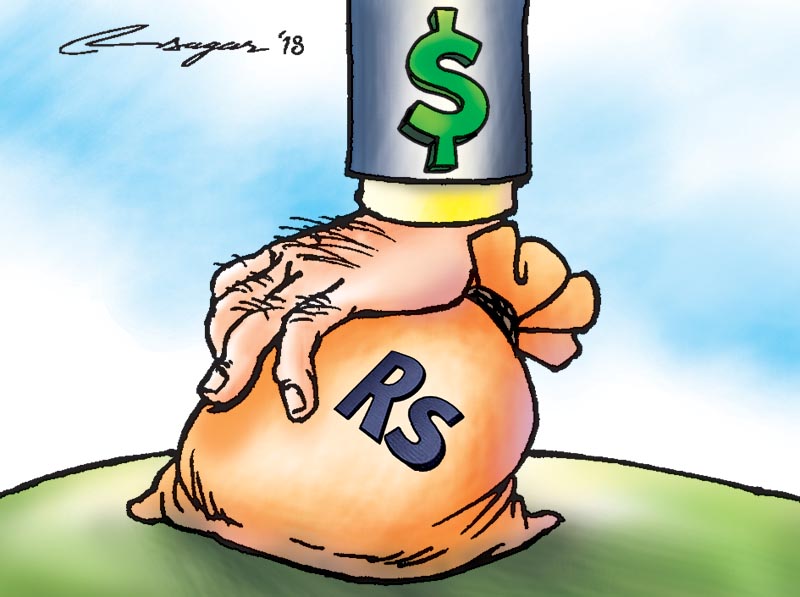Currency Risk: FDI bottleneck
While there are several factors that discourage FDI flows into Nepal, one of the major issues is absence of currency risk hedging market. Lack of instruments to hedge long term foreign exchange risk in the local market is one of the major bottlenecks for the foreign investors
It has been widely debated that infrastructural need for Nepal is very high. As per the World Bank, hydro power projects in pipeline at various stages of preparation solely require investments totalling US$26.5 billion, ie 120 per cent of the Gross Domestic Product (GDP) until 2030. Office of Nepal Investment Board’s website highlights eight different projects from railway, road, airport, and city metro to hydropower requiring investment of US$ 19-21 billion.
Domestic fund base to service these requirements is very limited as banks are struggling to fund their balance sheet for regular business. Another source of funds, export proceeds has historically remained weak for Nepal due to poor manufacturing and industrial base.
As per the World Bank report, exports from Nepal is hovering around US$60 million per month, down from already weak five-year average of US$84 million. The major components of the limited manufacturing units are also heavily reliant on imported raw material with very minimal value addition and hence not able to protect the money flowing out from the country.
The biggest component of source of fund for Nepal, remittances – as per the World Bank report, has seen robust growth in remittance over the time, from 2 per cent of the GDP in Fiscal Year 2000 to 15 per cent in Fiscal Year 2005, 22 per cent in Fiscal Year 2010, and as much as 30 per cent in Fiscal Year 2016. Nepal has one of the highest remittance inflows in per cent of the GDP. In fact as per the International Monetary Fund (IMF) report (2015-16), amongst the 20 countries, Nepal is at second place just below the Tajikistan.
However strong imports eat-up all these remittance flows and push the raising trade deficit further along with current account deficit. As per the International Monetary Fund report, Nepal’s current account deficit during the first six months of Fiscal Year 2017/18 has reached US$735 million.
Having a limited base of domestic source of funds, Nepal needs to create an environment to attract and facilitate the Foreign Direct Investment (FDI) inflows to meet the funding requirement of the country.
As per the World Bank report, FDI inflows in Nepal average less than 1 per cent of the GDP, even trailing behind the other smaller landlocked countries like Bhutan and Lao PDR. While there are several issues relating to policies and procedures that discourage FDI flows into Nepal, one of the major issues is absence of currency risk hedging market in Nepal.
Lack of instruments to hedge long term foreign exchange risk in the local market is one of the major bottlenecks for the foreign investors to invest in Nepal. Foreign exchange risk on such investments arises as the return on investments will be in local currency and when the investor repatriates it in their home currency they run the risk of adverse exchange rate.
In absence of Foreign Exchange Swap Market, banks are not in position to disperse the risk to the market participants and hence are using their balance sheet to provide the foreign currency hedging solution with limited amount and less than one year tenure which is not meeting the requirement of foreign investors for longer term high cost projects.
Recently, the central bank of Nepal has allowed banks to borrow foreign currency from international market to address the depleting lendable funds in Nepali banking industry. However, it is not helping because of two main reasons.
First, the central bank’s regulation does not allow posting collateral to borrow such loans and international lenders may consider it very risky to lend to banks in Nepal without any collateral. Second biggest factor is absence of currency risk hedging market in the country, which will expose the banks with exchange risk if they use such foreign currency to fund the local currency balance sheet.
Active and deep secondary trading of debt instruments is prerequisite to price the currency risk which is lacking currently. In fact, secondary debt market is defunct due to several underlying issues. Divergence of views on currency exchange rate is another major component for pricing efficiency. Currently Nepali rupee lacks divergence of views as the economy is heavily skewed towards import from abroad and hence demand for foreign currency is very high as against Nepali currency owing to weak exports.
Allowing non-resident Nepalis and foreign institutional investors to participate in Nepal’s capital market will increase the demand for Nepali rupee, thereby helping to create the divergence of views. This will also help to internationalise Nepali rupee which is immensely important to create liquidity depth of currency risk hedging market. Domestic liquidity alone will be shallow to support the hedging billions of dollars of FDI flows.
This will however, bring-in challenges by exposing Nepali economy to international market movements which needs to be managed with proper policy guidelines and diversification of risks. Managing risks for returns is universal.
Bazgain is Head Financial Markets at Standard Chartered Bank Nepal Ltd






